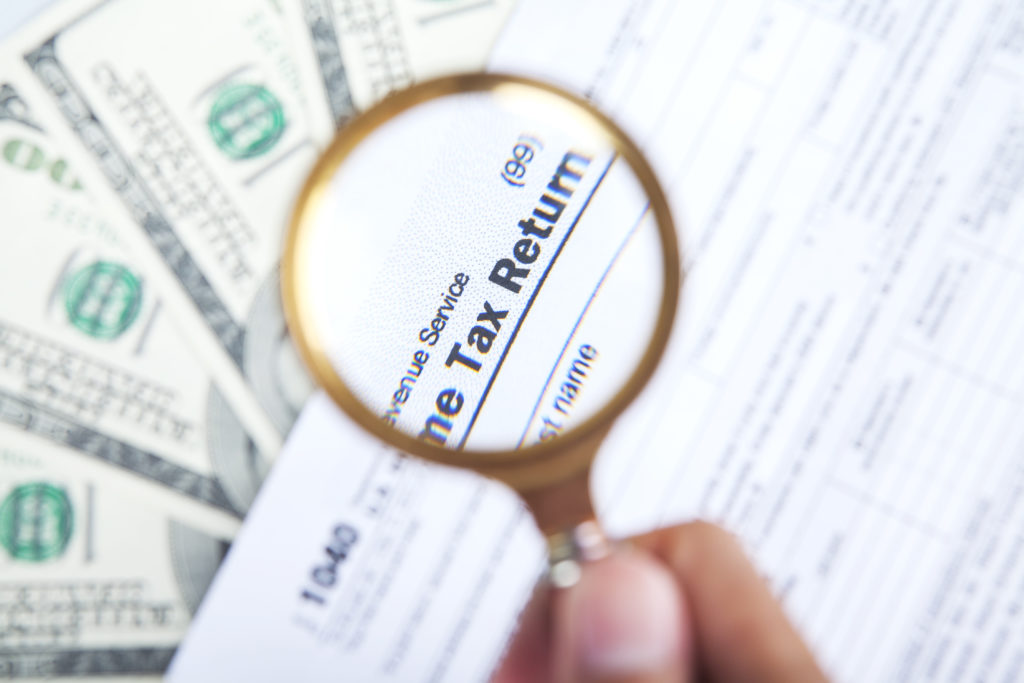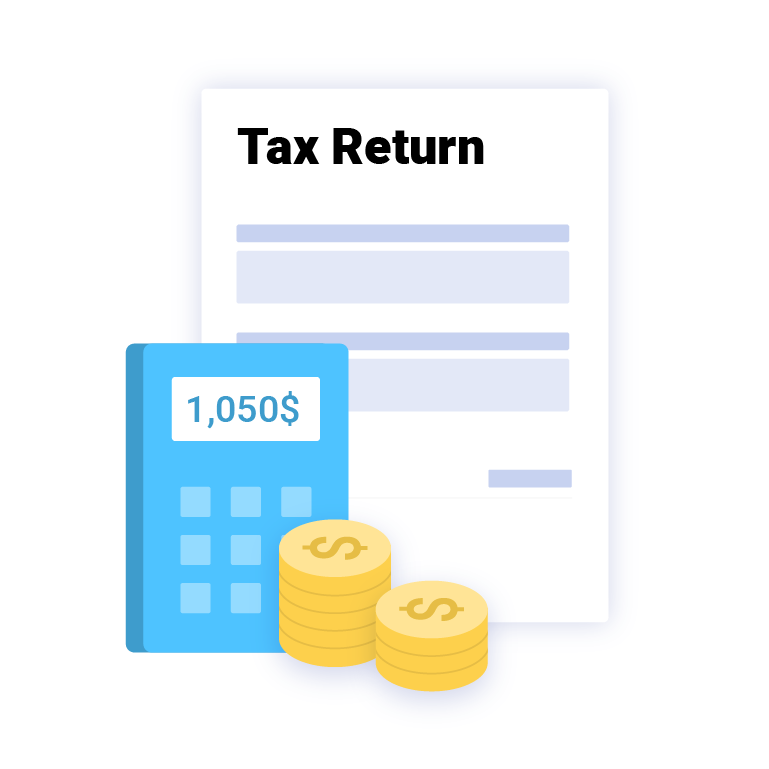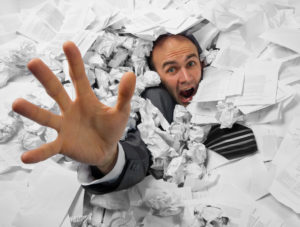Tax Deductible Receipts 101: All Questions Answered
The Internal Revenue Service (IRS) allows working professionals or organizations to deduct expenses categorized as ordinary or necessary for the functioning of a business. Tax-deductible receipts are the tools for a tax benefit that helps a working professional or a self-employed individual save tax. Naturally, if you are looking to reduce your taxable income and increase your tax refund potential, a good place to begin is to include purchases already made and bills paid every year.

If you’re still wondering where and how to start reducing your taxable income and put it to better use, this article is sure to help.
What is tax deduction?
A tax deduction is the total amount of the contribution that is reducible from the total taxable income. Generally, these deductions usually arise from several investments made or expenses incurred by a taxpayer. Therefore, an income tax deduction helps reduce the overall tax liability of an individual. However, tax deductions depend on the nature of the tax benefit claimed.
Furthermore, itemized deductions usually include the money spent on education, like tuition fees, medical bills, or charitable contributions. They are essential in the economy to promote investments and savings by the taxpayers.
To compute the tax-deductible amount, the income earned in a financial year under five income heads is added up to the total gross income. This sum is chargeable to income tax. For the net taxable income, there are certain reductions applicable on which income tax is exempted. The net income is first calculated by including the deduction amount in the total gross income and then later subtracted from it.
Benefits of tax deduction:
1. Helps reduce the taxable income subject to tax for a self-employed individual or an organization.
2. Deductions help save money and invest it in more profitable avenues.
What is a tax-deductible receipt?
Tax-deductible receipts are nothing but the receipts from purchases made or expenses incurred on goods or services provided in each financial year that are tax-deductible. Surprisingly, tax-deductible receipts are one of the best methods to assess annual spending, which several experts agreed upon accurately.
Additionally, be it a self-employed service provider or an organization, by the end of every financial year, everyone starts ransacking their home or workplace to hunt bills and receipts from several work lunches, business trips, or any other necessary expenditure that may help them claim a refund from the IRS.

Do you need receipts for tax deductions?
Surprisingly, the Internal Revenue Service (IRS) allows a tax deduction of only certain expenses. Generally, to accurately compute tax deductions, it is essential to have a complete list of receipts or bills paid for various business or personal costs in a tax year. It is not necessary to have a receipt for each expense because transactions have shifted to using credit cards and debit cards. IRS receipt requirements are $75, which means that taxpayers do not necessarily need to produce receipts for the minutest expenses.
An income taxpayer does not necessarily need to send in proof of the expenses incurred in receipts while submitting the self-assessment tax return. However, it is essential to record the expenses incurred for a minimum of five years after submitting the return for a particular tax year. Physical receipts for taxes are required when a business or an individual is audited. Additionally, the taxpayer is expected to show a receipt for each tax write-off or forfeit it and pay the penalty.
What receipts do you need for tax deduction?
The IRS exempts tax on certain goods or services consumed for business or home. While tax-deductible computing income, the following expenses can be accounted for a refund:
1. Medical expenses
Undeniably, it is necessary to show itemized deductions to deduct medical expenses for personal income tax returns and business. Deductions that qualify include services used for yourself, your spouse, dependents, or any children.
These expenses may include premiums for medical, medicare insurance that has not been reimbursed for and is not paid using pre-tax dollars.
Even the cost of eyeglasses, contact lenses, crutches, hearing aids, or other medical goods can be included. Medical assistance or services, including nursing care, hospital stays, rehabilitation programs, or sessions with a psychologist, are also liable to deductions.
2. Childcare expenses
Obviously, the Internal Revenue Service (IRS) also exempts expenses incurred on services for childcare, like money paid to a babysitter, cay care, after-school activity program, or any other care provider. However, these expenses only qualify if they enabled you or your spouse to work or search for work. Occasionally, if the spouse is disabled or a full-time student, both the partners do not need to show an earned income.
3. Unreimbursed work-related expenses
For one thing, it is highly advisable to keep a record of receipts if you have to pay for work-related expenses. Before the year 2018, the IRS allows deduction of unreimbursed goods or services that include the cost of tools, equipment, uniforms, protective gear, or professional dues like union dues or specific organization’s membership.
From 2018, unreimbursed employee expenses are not reducible for federal taxes. However, a few states still allow the deduction of such expenses.
4. Self-employed expenses
Correspondingly, being a self-employed professional comes with its fair share of using goods or services. Thus, these expenses may include money paid for materials, supplies, marketing, insurance, travel, or other such business expenses. To compute an accurate tax-deductible income and avoid discrepancies during an audit, self-employed professionals should save receipts from every purchase. Utilities like rent or mortgage are also considered at the end of the financial year.
5. Other expenses
There are also a few expenses that benefit an individual with one or more significant purchases in a financial year. Such expenses could be a purchase of a car, a boat or any home addition. Such goods or services may have led to a more significant amount of sales tax paid than the income tax withheld. However, the name of the charity, date, the donor’s name, amount donated, and the note should be on the receipt for tax exemption.
How to keep track of tax-deductible receipts?
Straightaway, keeping a record of all the receipts received from purchasing goods or services is a tedious task that often gets out of hand. However, this digital age also comes bearing a few boons that can make your job easy:
1. Organize
In the long run, be it a self-employed individual or a business organization; there are innumerable transactions that occur daily. It’s also easy to lose such pieces of paper carrying all the crucial details, even more so when there are many.
Generally, it is advisable to follow the traditional method of maintaining a file folder to stay organized. Finally, it is highly effective and helps you categorize expenses under several labels for easier accessibility.
You may also use the following categories to label your folders to start:
- Income
- Medical bills
- Banking information (this may include student loans, mortgage, investments, etc.)
- Child care (receipts for goods or services for young dependents)
- Home and property
- Charitable donations
Make sure to include any freelance income or self-employed income from a small business or gig.
2. Digitize your receipts
Unsurprisingly, it is no surprise that handling a greater number of receipts comes with the risk of losing them unexpectedly. However, the IRS accepts scanned or digital receipts for taxation purposes.
To maintain a neater and more accurate record, the typical tax advice by experts is that taxpayers must scan receipts or individuals should immediately click a picture of the receipt when they incur any expenses. While scanning or snapping a picture, one must ensure that the picture is clear and details like the date, address of the business, the total amount spent should be legible.
Instead, scanning and storing the images of the receipts is not enough. Correspondingly, if the IRS demands to see your documents, working professionals must orderly keep the receipts. You can also use a receipt tracking app or software to aid you in organizing the data and saving the images.
3. Write notes on receipts
Undoubtedly, a few organizations and self-employed individuals might need to report 1099 income and deduct work-related expenses. However, the receipts must carry specific details like the amount spent, the location, the date, and the type of expense. Therefore, it is essential to note any necessary detail directly on the receipt, lest you forget.
For example, you met a potential investor over a business lunch. Presently, to write off the meal expenses in a tax year, the receipt must show the restaurant’s name, the location, date, who attended the meeting, the total amount of money paid, and a note carrying the details of the purpose of the meeting. Secondly, a budding business incurs considerable expenses, which may get difficult to recall later. Therefore, writing notes simultaneously is standard tax advice.
Can you claim tax deductions without a receipt?
While it is crucial to maintain impeccable records while filing for a return by IRS, there are also a few instances where you can claim a tax deduction without a receipt in a tax year.
Unquestionably, to claim a tax deduction without a receipt, the expense must be “allowable.” The simplest way to assess whether an expense is “allowable” is to ask yourself:
- Is the expense directly related to your occupation?
- Did you pay for the expense incurred?
- Were you not reimbursed or paid back by your employer or the person in charge?
If you find yourself answering ‘yes’ to all the above questions and you have a credit card or bank statement displaying the transactions, then it is easier to deduce that the expense is “allowable.”
It is also crucial to differentiate between what can be claimed in the list of the purchased items and what must not be counted. Chiefly, there needs to be a way to differentiate between work expenses and personal items:
1. Subscription/Membership fees or Union fees:
Generally, itemized on the employer’s income statement or bank summary, these fees do not require a receipt. All you need is the documentation in place to claim reimbursement at the end of the financial year.
2. Gas/Petrol with a logbook:
A car logbook maintained for at least 12 consecutive weeks and over 5 years is beneficial in using work-related kilometres along with the car’s capacity to include a petrol deduction on the return.
3. Gas/Petrol without a logbook:
As long as you can demonstrate your calculation of the number of kilometres claimed, the ATO allows a claim up to 5,000 km.
4. Computer and accessories:
It is easier to claim for computer or equipment purchases if there is a credit card statement with a note made at the time of the purchase with all the necessary details.
5. Stationery items:
A credit card statement or bank account statement carrying the purchase details and the note against it works perfectly well for return.
How much tax deductions can you claim without a receipt?
Markedly, for the financial year of 2020, the standard deduction for single taxpayers without a receipt was $12,400. Whereas for partners who are married or filing the return jointly, the tax deduction is $24,800.
You can also claim charitable donations deduction without bearing a donation receipt. However, cash donations can only claim up to $250, and the taxpayers must provide a bank account statement or a payroll deduction to claim the tax deduction.
Tax-deductible receipts are crucial for a business organization and a professional that helps claim returns from the Internal Revenue Service. The biggest advantage of maintaining a receipt record for an income tax return is that it offers the working professionals an opportunity to save that money and invest it for greater use.
FAQS
You can claim tax deductions for groceries that you buy for the office and your team in order to run your work. You cannot claim your personal household grocery bills for tax benefits, even if you work from home.
Primarily, You can claim 100% of restaurant receipts if the central cause of the meal was business related. This includes simple meals (likely without alcohol) that were conducted as a marketing, morale boosting, advertising, business dealing and more. Even entertainment meals are allowed tax deductions, with some nuances.
Yes, LIC can be claimed as a deduction up to a maximal limit dictated by state laws. There are also certain conditions where the premium must be under a certain amount.
Yes, submission of your rent receipts along with the rent agreement can be filed for tax deductions. There are upper limits to the amount that can be deducted, so check with local state laws to confirm.
Don’t forget to share









